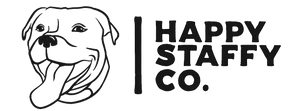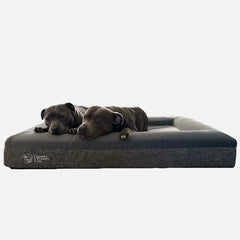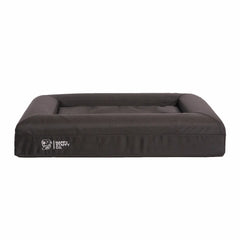For our furry companions, toys are more than playthings—they’re sources of joy, comfort, and excitement. From fetch in the backyard to quiet moments of chewing, toys play a crucial role in a dog’s happiness and health. Whether it’s durable staffy toys built for power chewers or soft plush companions, these cherished items are essential to your pup’s well-being. But over time, they collect dirt, bacteria, and grime, posing potential risks if left uncleaned. Washing your dog’s toys regularly isn’t just about maintaining cleanliness; it’s about protecting your pet and showing them the care they deserve.
So, how do you wash dog toys? Start by identifying the material—rubber, fabric, or hard plastic—and use the appropriate cleaning method: warm soapy water, a gentle machine cycle, or a natural vinegar solution. Whether your dog’s favorite is a squeaky plush or a durable chew toy, regular maintenance keeps playtime safe and enjoyable. With a little effort, you’ll ensure every toss, chew, and cuddle is as fun and worry-free as it should be.
Key Takeaways
-
Regular cleaning of dog toys helps prevent the buildup of bacteria that could harm your pet’s health.
-
Rubber and plastic toys should be washed with warm soapy water or placed in the dishwasher if labelled safe.
-
Fabric and plush toys benefit from machine washing on a gentle cycle with pet-safe detergent.
-
Rope toys can trap bacteria and should be soaked, rinsed, and microwaved (if safe) to sanitise effectively.
-
Cleaning frequency depends on usage—daily-use and outdoor toys should be washed weekly or after each play session.
Why Washing Dog Toys is Essential

Dog toys are exposed to all kinds of environments—saliva, dirt, mud, and even outdoor elements. Over time, this leads to a buildup of bacteria and germs that can pose health risks to your pup, including gum disease, digestive issues, and allergies. Toys, especially durable staffy toys designed for heavy chewers, can trap grime in crevices, making regular cleaning essential.
Clean toys don’t just look better—they contribute to your dog’s overall health and happiness. By keeping toys fresh, you reduce the risk of harmful bacteria, ensure the toys last longer, and give your furry friend a safer playtime experience.
Types of Dog Toys and Cleaning Considerations
Different types of dog toys require tailored cleaning methods to maintain their condition, ensure hygiene, and extend their lifespan. Regular cleaning not only keeps the toys looking fresh but also prevents bacteria, dirt, and other contaminants from affecting your dog’s health. Here’s a closer look at the most common toy categories and how to clean them effectively:
Rubber and Plastic Toys
Rubber and plastic toys are some of the most popular choices for dogs. These materials are built to withstand heavy chewing and rough play. To clean rubber and plastic toys, use warm, soapy water and a scrubbing brush to remove grime from crevices. If labeled as dishwasher-safe, you can place them on the top rack of the dishwasher for a thorough cleaning. Always use pet-safe detergent and rinse thoroughly to ensure no harmful residues remain.
Fabric and Plush Toys
Soft and cuddly, fabric and plush toys are perfect for puppies that enjoy gentle play or snuggling with their favorite companions. These toys can typically be cleaned in the washing machine using a gentle cycle and pet-safe detergent. For smaller or more delicate plush toys, place them in a mesh laundry bag to reduce wear and tear during the wash. Always air-dry plush toys completely, as dampness can lead to mold or mildew. Regular washing keeps these toys free from bacteria and smelling fresh.
Hard Toys
Hard toys like bones and antlers provide dogs with hours of chewing satisfaction, but they can collect debris and bacteria over time. To sanitise these toys, boil them in water for a few minutes or soak them in a solution of equal parts water and white vinegar. This helps eliminate germs and loosen any stuck-on dirt. After cleaning, rinse thoroughly and allow them to air dry completely before giving them back to your dog. Regular sanitising ensures these tough toys remain safe for chewing.
Rope Toys
Rope toys are great for interactive play, especially tug-of-war, but their fibrous material can easily trap bacteria and dirt. To clean rope toys, soak them in hot water with a pet-safe detergent. After soaking, rinse thoroughly and place them in the microwave for 1-2 minutes to kill bacteria. Be cautious not to microwave toys with any metal parts. Ensure the rope toy is completely dry before returning it to your dog to prevent mold growth.
How Often Should You Wash Dog Toys?

The frequency of cleaning your dog’s toys depends on how often they’re used and the conditions they’re exposed to. Keeping a consistent cleaning schedule ensures your pup’s playtime stays hygienic and safe. Here’s a guide to how often different types of toys should be cleaned:
Daily Use Toys
Toys that your dog frequently chews or carries around, such as rubber or plush toys, should be cleaned at least once a week. These toys are exposed to saliva and germs, making regular cleaning essential to prevent bacteria buildup.
Outdoor Toys
Toys used for outdoor play, such as fetch balls or tug ropes, should be cleaned after each outdoor session. These toys often pick up dirt, mud, and other contaminants that can be harmful if left unwashed. A quick rinse or thorough scrub, depending on the level of grime, keeps them ready for the next adventure.
Rotated or Rarely Used Toys
If you rotate your dog’s toys to keep playtime exciting, be sure to clean them before storing and again before bringing them back into use. Storing dirty toys can lead to mold and unpleasant odors, so washing them first ensures they stay fresh while in storage.
By establishing a cleaning routine tailored to your dog’s habits and the types of toys they use, you’ll maintain a healthy and enjoyable play environment. This is especially important for durable toys, which are built to withstand intense play but still require care to stay in top condition. Regular maintenance ensures your dog’s toys remain safe, clean, and fun for every play session.
Step-by-Step Guide: How to Wash Dog Toys

A. Rubber and Plastic Toys
- Rinse with warm soapy water, scrubbing thoroughly to remove grime.
- For dishwasher-safe toys, place them on the top rack with pet-safe detergent for a deeper clean.
- Rinse thoroughly and air dry completely to prevent moisture buildup.
B. Fabric and Plush Toys
- Machine wash on a gentle cycle using fragrance-free, pet-safe detergent.
- For more delicate items, handwash with mild soap and warm water.
- Air dry to prevent shrinkage or damage from high heat.
C. Hard Toys (Bones, Antlers, etc.)
- Sanitise by boiling in water for a few minutes or soaking in a vinegar-water solution.
- Scrub off any stuck particles and rinse well before drying.
D. Rope Toys
- Soak in hot water with mild soap, rinse, and microwave for 1-2 minutes to kill bacteria.
- Ensure the toy is completely dry to avoid mold.
Pet-Safe Cleaning Solutions
Not all cleaning agents are created equal, and some can pose risks to your pet’s health if not chosen carefully. To ensure safe and worry-free cleaning, follow these guidelines for selecting and using pet-safe solutions:
Pet-Safe Detergents:
Opt for non-toxic, fragrance-free soaps or detergents specifically designed for pets. These are gentle on sensitive noses and mouths while effectively cleaning toys. Avoid anything with artificial dyes or strong scents, as these can irritate your dog or leave harmful residues.
DIY Natural Solutions:
For an eco-friendly and affordable alternative, mix equal parts water and white vinegar for a natural cleaning solution. Vinegar is a safe and effective disinfectant, perfect for neutralising odors and eliminating bacteria. For stubborn grime or stains, sprinkle baking soda onto the toy before scrubbing with the vinegar solution. Rinse thoroughly to remove any residue.
Avoid Harmful Products:
Steer clear of cleaners containing bleach, ammonia, alcohol, or strong fragrances. These chemicals can linger on toys and, if ingested, may lead to digestive upset or toxic reactions. Always double-check product labels for any warning signs or harmful ingredients.
Taking these precautions ensures your dog’s toys remain clean, safe, and free of any harmful chemicals.
Proper Drying and Storage
Drying your dog’s toys thoroughly after washing is just as crucial as cleaning them. Moisture left behind can lead to mold, mildew, and odors, making the toys unsafe for play. Use the following drying methods based on the toy material:
Rubber and Plastic Toys:
After washing, either air dry or pat them down with a clean towel. These materials dry quickly but should be checked for any hidden moisture in crevices.
Fabric and Plush Toys:
Hang fabric toys on a line to air dry naturally, or use a dryer on a low-heat setting for plush items. High heat can shrink or damage the material, so gentle drying is best.
Hard and Rope Toys:
Allow these to air dry completely, ensuring that any moisture trapped inside the rope fibers evaporates. Placing damp rope toys in a sealed container can lead to mold growth, so patience is key.
Once the toys are fully dry, store them in a clean, dry container or toy bin. Keeping toys off the floor and in a designated spot not only maintains cleanliness but also prolongs their lifespan by protecting them from unnecessary wear and tear.
When to Replace Dog Toys

Even the most durable toys, including staffy toys built for power chewers, won’t last forever. Regularly inspect your dog’s toys to ensure they remain safe for play. Here’s when it’s time to retire a toy:
Visible Damage:
Tears, cracks, and missing pieces can become choking hazards or lead to accidental ingestion. Toys showing significant wear should be replaced immediately.
Persistent Odors:
If a toy smells bad even after a thorough cleaning, it may have absorbed bacteria or other contaminants. Lingering odors can signal that the toy is no longer safe for your dog.
Chewing Risks:
Toys with sharp edges, broken pieces, or structural damage can harm your dog’s gums, teeth, or mouth. If a toy is no longer intact, it’s better to replace it with a new one.
Monitoring your dog’s toy collection and replacing items as needed ensures that playtime stays safe and enjoyable. A fresh toy is not only exciting for your pup but also a proactive way to show your care.
Most Asked Questions About Washing Dog Toys
Can I use regular dish soap to wash dog toys?
It’s better to use pet-safe soaps that are free of harsh chemicals or fragrances. Regular dish soap might leave harmful residues that your dog could ingest during play. Always rinse toys thoroughly after cleaning.
How do I clean toys that have a bad smell?
A soak in a solution of vinegar and baking soda works wonders to neutralise strong odors. Mix equal parts water and vinegar, add a small amount of baking soda, and let the toys sit for a few minutes. Scrub gently, rinse thoroughly, and allow them to air dry completely.
Can I put all toys in the dishwasher?
No, only dishwasher-safe toys, such as many rubber and plastic items, should be placed in the dishwasher. Always check the label or product description before cleaning to avoid damaging the toy. Use the top rack and pet-safe detergent for best results.
Is it safe to wash dog toys in the washing machine?
Yes, many plush and fabric toys can be safely washed in the machine. Use a gentle cycle with cold or warm water and pet-safe, fragrance-free detergent. Place smaller toys in a mesh laundry bag to prevent wear and tear. Avoid washing toys that have plastic or squeakers unless they are specifically labeled as machine-washable.
How do I sanitise stuffed animals that can't be washed?
For non-washable stuffed animals, use a steam cleaner or a sanitising spray that is pet-safe. Another method is placing the toy in a sealed plastic bag and freezing it for 24-48 hours to kill bacteria and dust mites. Afterward, wipe the toy down with a damp cloth and let it air dry.
How do you disinfect toys in the washing machine?
To disinfect toys in the washing machine, use hot water and add a cup of white vinegar to the rinse cycle. This natural solution kills bacteria while remaining safe for your dog. Ensure the toys are completely dry before returning them to your pup to prevent mold or mildew. For delicate toys, always choose a gentle cycle.
Keeping Playtime Safe and Fun
Your dog’s toys are more than just accessories—they’re a vital part of their well-being. Whether it’s sturdy staffy toys for power chewers or soft, cuddly plush toys, keeping them clean ensures every play session is both safe and enjoyable. Regular cleaning and maintenance not only protect your pup but also show the love and care they deserve. By making toy hygiene a priority, you’re creating a happier, healthier environment for your furry companion.



